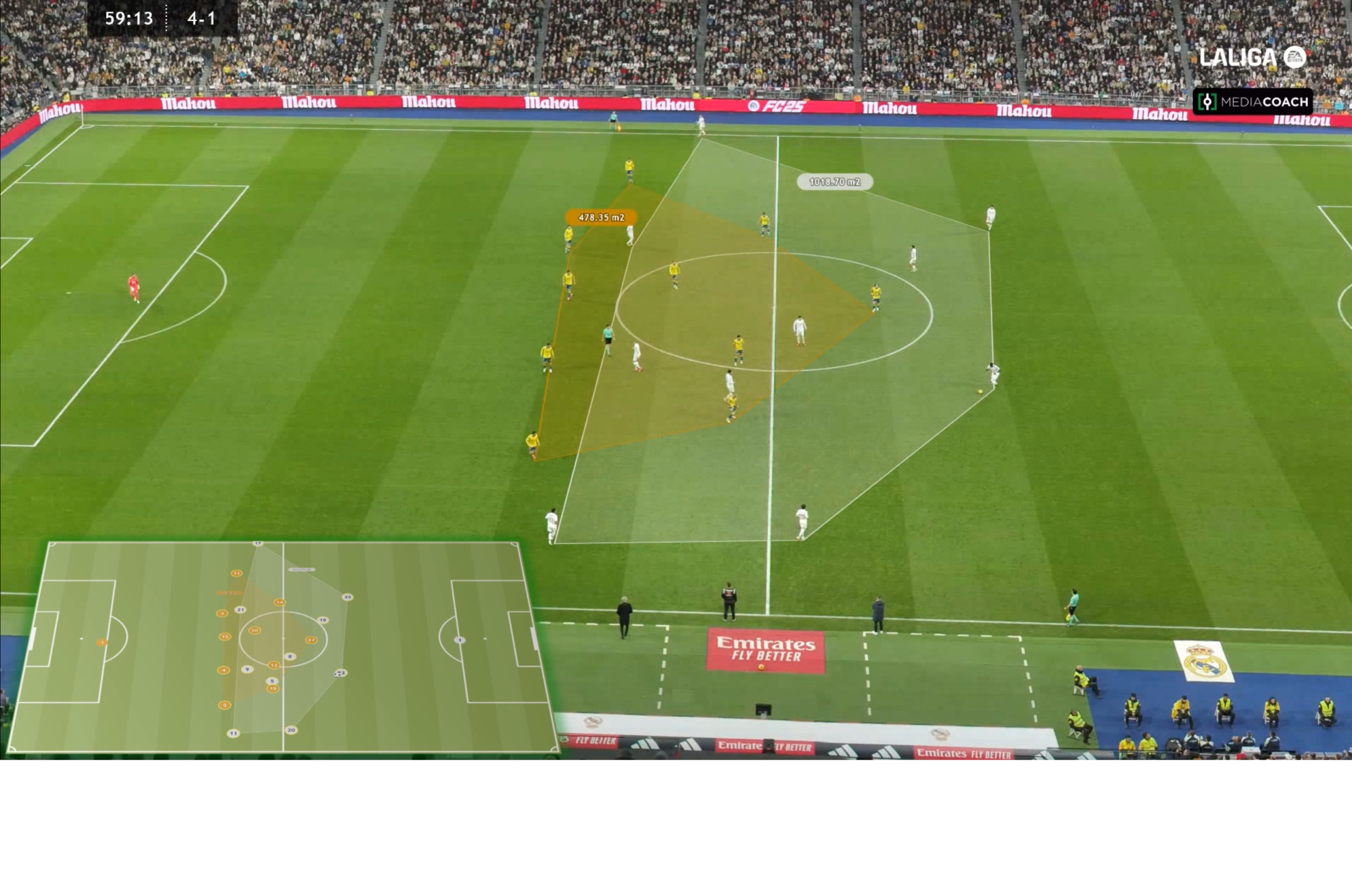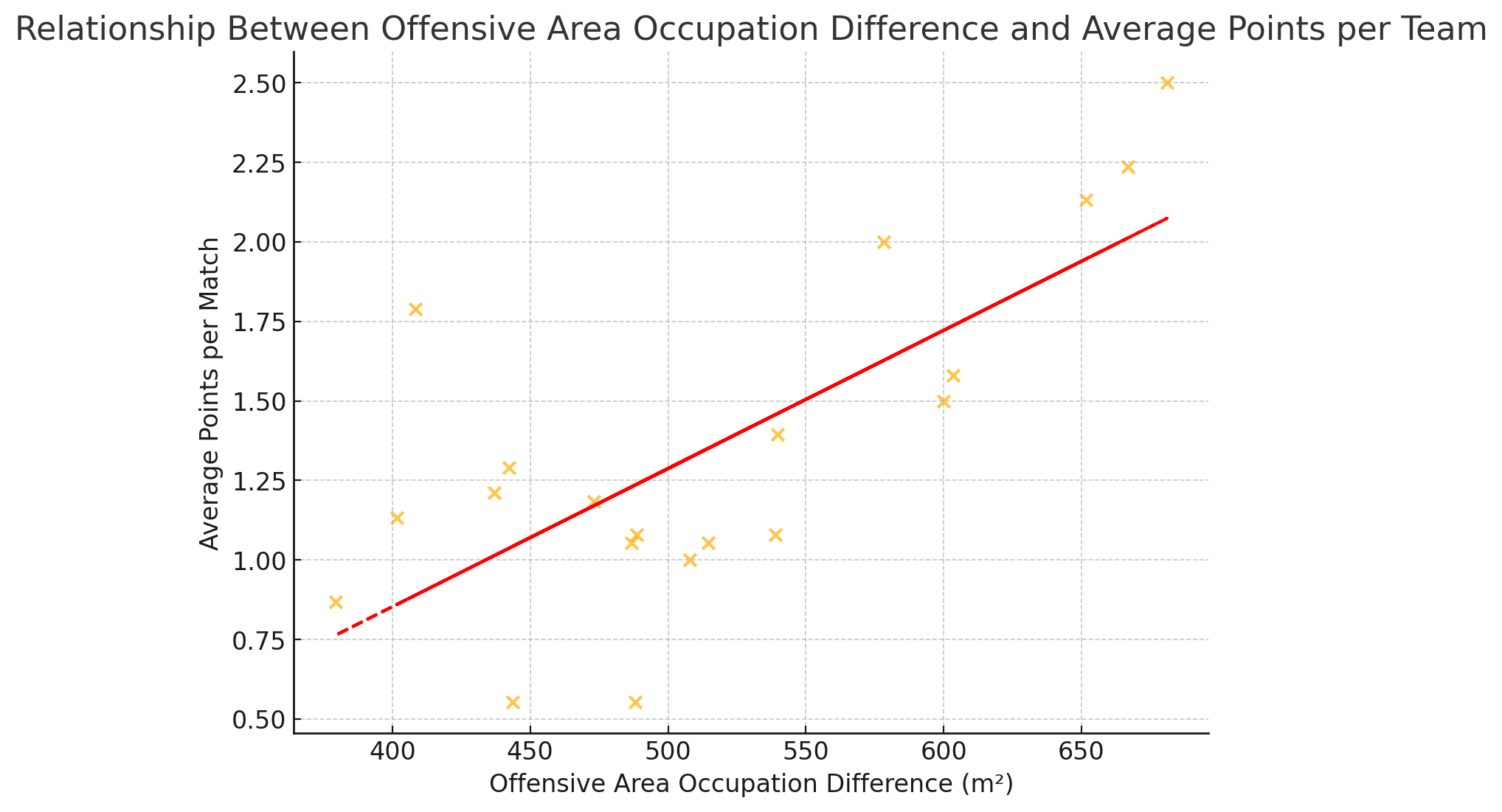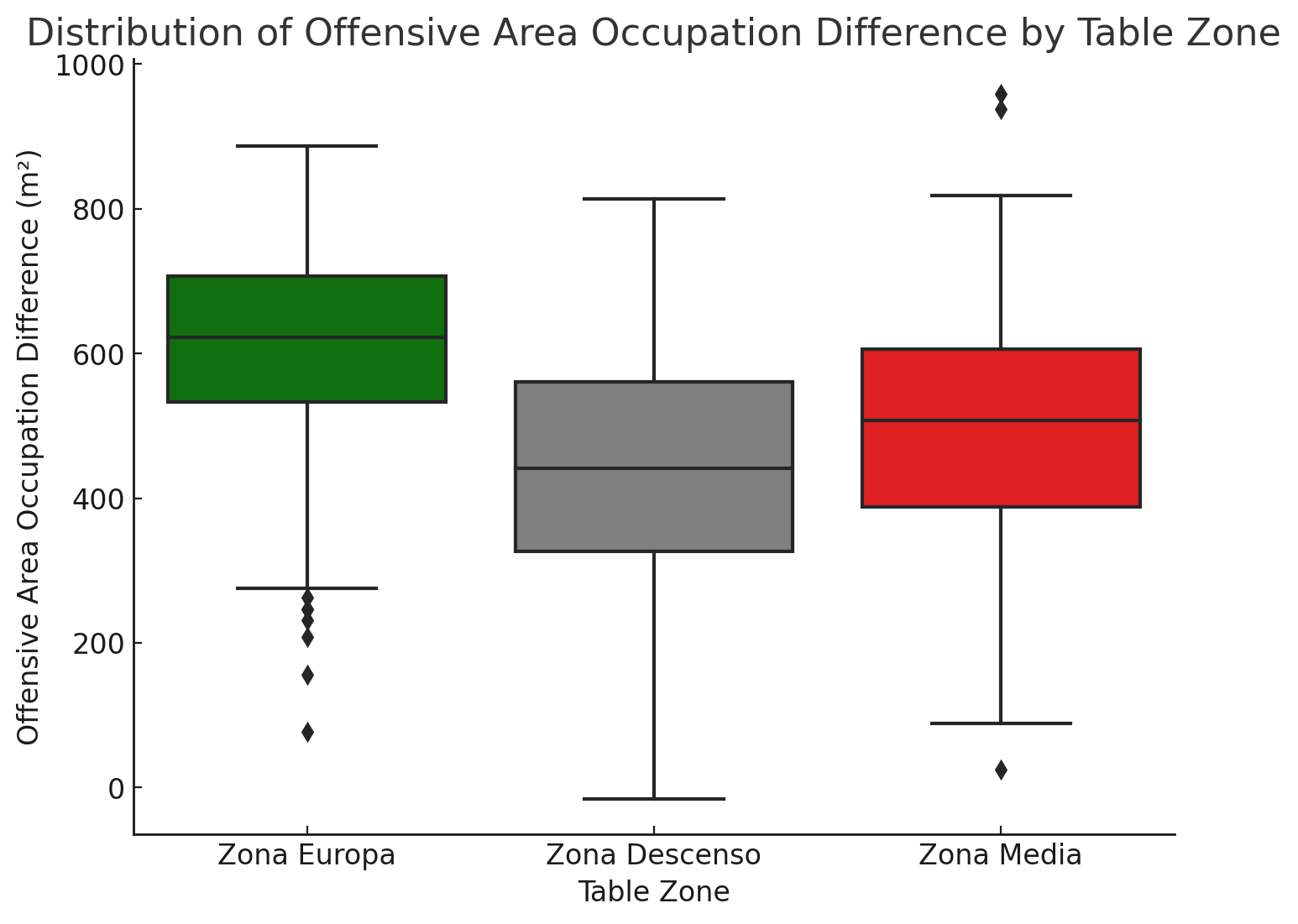
14 Feb How Spatial Dominance Influences Team Performance in LALIGA EA Sports
Space as a Key Factor in Competitive Performance
In modern football, game analysis has evolved to understand how teams occupy space. At LALIGA’s Football Intelligence & Performance Area, we conducted a study based on data from the 2023/24 LALIGA EA Sports season, revealing a direct correlation between the percentage difference between the convex hull in the offensive phase and the opponent’s convex hull in the defensive phase and competitive performance.
Teams that achieve a greater percentage difference between their attacking convex hull and the opponent’s defensive convex hull tend to earn more points and rank higher in the standings. This research reinforces the idea that spatial dominance is not just a key tactical concept but also a determining factor in competition.
Methodology: How We Measure Spatial Dominance
For this study, we analyzed the percentage difference between:
- The team’s convex hull in the offensive phase, calculated based on the total area occupied by players in possession.
- The opponent’s convex hull in the defensive phase, determined by the spatial structure of the team without the ball.
It is essential to note that intersections between both areas are not considered; only the total convex hull area occupied by the attacking team is compared against the total convex hull area occupied by the opponent in the defensive phase.
This difference reflects how much more space a team occupies in attack compared to its opponent’s defensive organization. A team may have a large offensive convex hull, but if the opponent also has a large defensive convex hull, the percentage difference will be low. Conversely, a team may not have the widest offensive convex hull in the league, but if the opposing team occupies very little space defensively, the difference will be significant. We analyzed this metric’s relationship with points earned per match and league standings.
Key Findings: Space and Points Go Hand in Hand
Data shows that the percentage difference in offensive convex hull occupancy compared to defensive convex hull occupancy has a strong correlation with points earned (r = 0.726, p < 0.001). This indicates that teams that gain a greater spatial advantage in attack over their opponent’s defense tend to achieve better results.

Additionally, when analyzing team standings, we found statistically significant differences (p < 0.00001) between the three defined groups:
- Top-ranked teams have a significantly greater offensive occupancy difference than their rivals.
- Mid-table teams exhibit intermediate values.
- Relegation-zone teams tend to be spatially dominated, showing very low or negative values.
Top 3 Teams with the Highest Offensive Convex Hull Occupancy Difference:
- Real Madrid (+12.3%)
- FC Barcelona (+11.8%)
- Girona (+11.5%)
? This Top 3 exactly matches the top three teams in the final standings of the 2023/24 LALIGA EA Sports season, reinforcing the importance of spatial dominance in competitive success.
How Coaches Can Apply These Insights
This study provides valuable information that coaches can use to improve their tactical planning and strategies:
✅ Optimize Offensive Spatial Occupancy
- Teams that maintain good width and depth in the offensive phase, reflected in a higher relative convex hull difference, tend to achieve better results.
- Implement possession-based drills with width emphasis and tactical exercises to enhance field occupation.
✅ Control Defensive Structure
- If lower-performing teams tend to be spatially dominated, it is crucial to minimize the space conceded to opponents without losing defensive structure.
- Work on compact defensive blocks and coordinated pressing to neutralize the opponent’s spatial advantage.
✅ Adapt Strategies Based on the Opponent
- A team facing a rival with a high offensive occupancy difference should adjust its defensive setup and pressing strategies.
- Implement intelligent defensive transitions and pressing adjustments to minimize the opponent’s spatial impact.
✅ Use Spatial Analysis for Performance Assessment
- Coaches can use this metric to evaluate their team’s effectiveness in occupying offensive space and limiting defensive gaps.
- Tactical adjustments can be made based on the convex hull percentage difference compared to the opponent.
Conclusion: Spatial Dominance is Crucial for Competitive Success
Data from the 2023/24 LALIGA EA Sports season shows that spatial occupancy is not just a tactical consideration but a key factor in competitive performance. Teams that achieve a higher percentage difference between their offensive spatial occupancy and their opponent’s defensive convex hull tend to earn more points and rank higher in the standings.
This finding reinforces the importance of working on spatial control as a strategic resource in tactical planning and training design.



